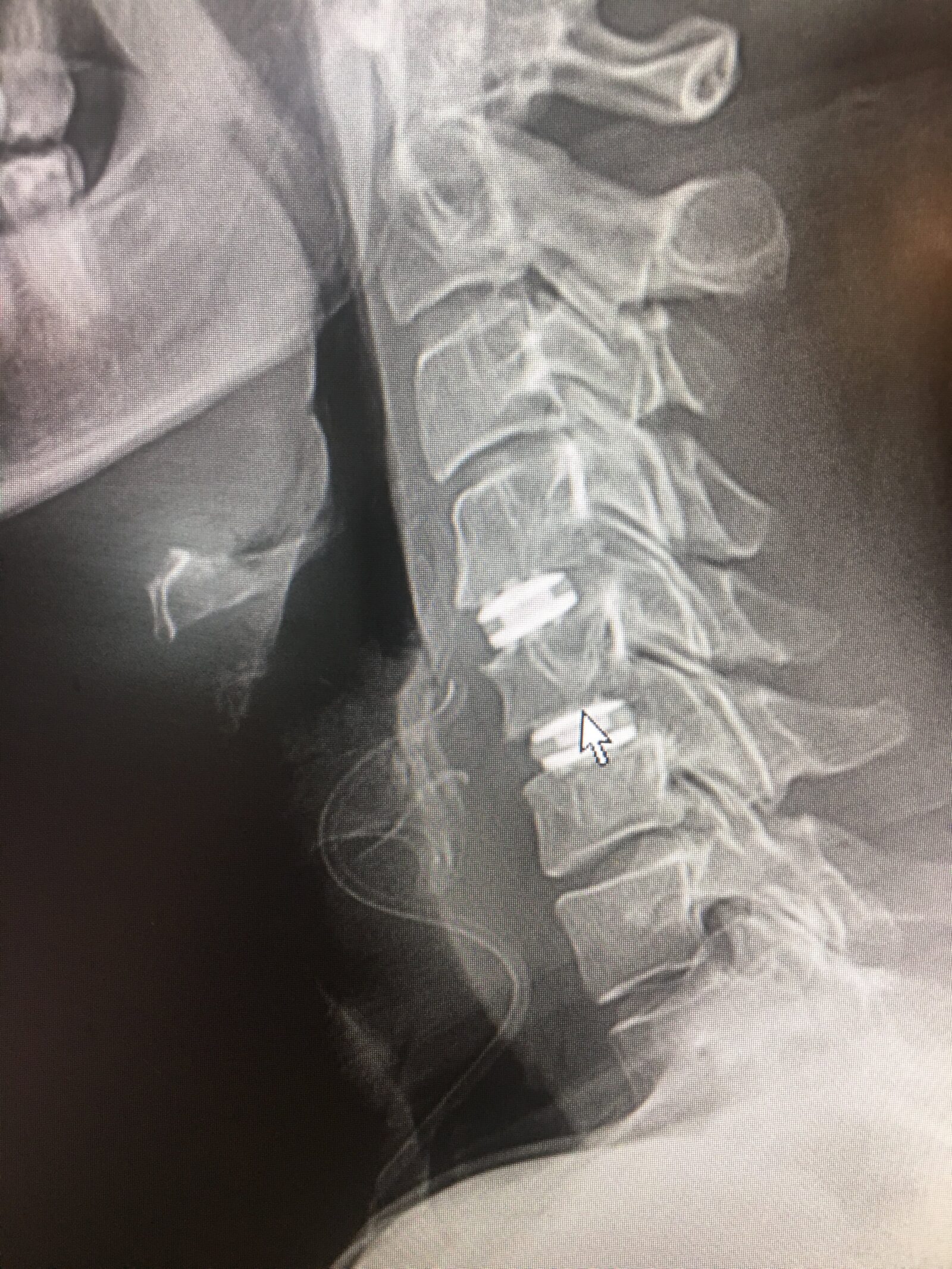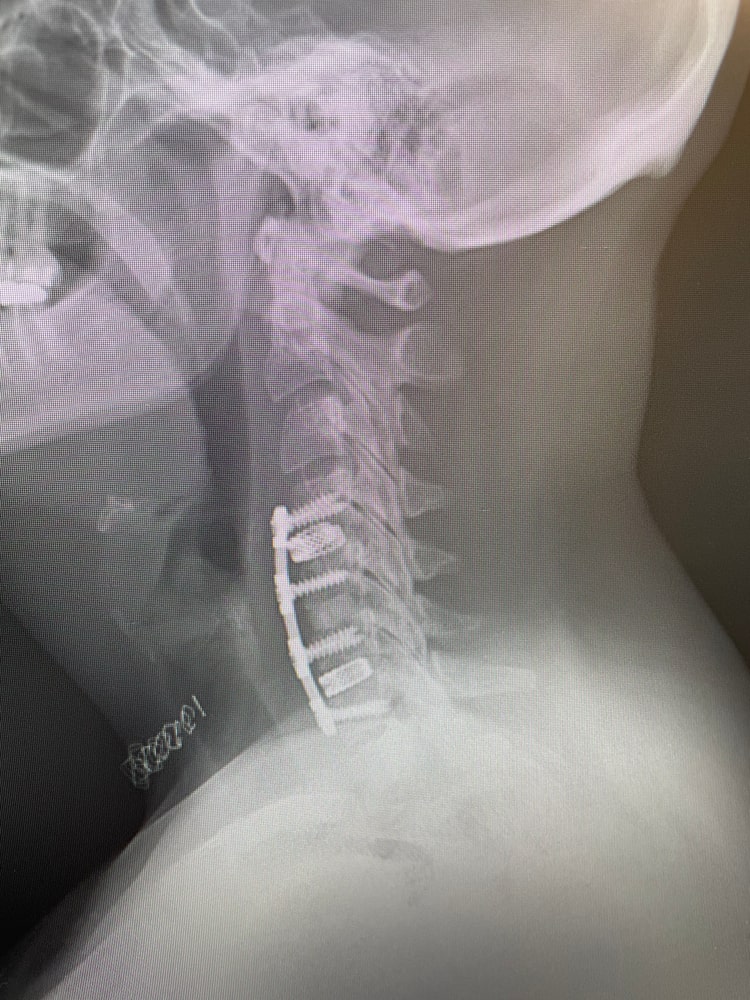Neck pain and cervical disc degeneration are common conditions that can significantly impact a person’s quality of life. Thankfully, advances in medical technology have given rise to two effective surgical approaches for treating these conditions: Cervical Artificial Disc Replacement (ADR) and Anterior Cervical Discectomy and Fusion (ACDF). In this blog, we will explore both procedures, understand how they work, and discuss when one approach may be preferential to the other.
Cervical Artificial Disc Replacement (ADR):
Cervical Artificial Disc Replacement (ADR) is a surgical procedure used to treat cervical disc degeneration or cervical disc herniation in the neck region. The procedure involves removing a damaged or diseased cervical disc and replacing it with an artificial disc implant, also known as an artificial cervical disc or cervical disc prosthesis.

The cervical spine is the upper part of the spine, comprising seven vertebrae labeled as C1 to C7. Between each pair of vertebrae, there are intervertebral discs that act as shock absorbers and allow for smooth movement and flexibility of the neck. Over time, these discs can degenerate or become herniated, leading to neck pain, arm pain, and other neurological symptoms.
Cervical ADR is designed to address these issues while preserving motion in the spine. Unlike traditional procedures like Anterior Cervical Discectomy and Fusion (ACDF), which involves removing the damaged disc and fusing the adjacent vertebrae, ADR aims to maintain the natural movement and flexibility of the cervical spine.
During the ADR procedure, the surgeon accesses the cervical spine through a small incision in the front of the neck. The affected disc is carefully removed, and the artificial disc implant is inserted into the disc space. The artificial disc is designed to mimic the function of a natural disc, allowing for motion and load-bearing while providing stability to the spine.
Advantages of ADR:
- Motion preservation: ADR maintains the normal range of motion in the cervical spine, reducing stress on adjacent discs and potentially reducing the risk of adjacent segment disease.
- Quicker recovery: Compared to fusion surgeries like ACDF, ADR often results in a faster recovery time, allowing patients to return to normal activities sooner.
- Reduced risk of adjacent segment degeneration: Preserving motion at the treated level can potentially decrease the likelihood of developing issues in neighboring discs over time.
- Long-term benefits: By preserving the natural movement of the cervical spine, ADR may offer long-term benefits in terms of patient satisfaction and reduced risk of additional surgeries.
Limitations of Cervical Artificial Disc Replacement (ADR)
- Patient selection: Not all patients are suitable candidates for cervical ADR. Factors such as the extent of disc degeneration, spinal instability, or the presence of certain spinal conditions may make ADR less appropriate for some individuals.
- Technical complexity: ADR is a technically demanding procedure that requires specialized training and experience. Surgeons must have expertise in performing the surgery to achieve optimal results and minimize complications.
- Device-related issues: As with any medical implant, there is a risk of device-related complications, such as device migration, wear, or failure. While modern artificial discs are designed to be durable, long-term data on their performance are still evolving.
- Adjacent segment degeneration: While ADR aims to reduce the risk of adjacent segment degeneration compared to fusion surgeries, it does not completely eliminate the possibility. Over time, adjacent discs may still degenerate due to natural wear and tear.
- Limited evidence for long-term outcomes: Although ADR has shown promising results in the short to medium term, long-term data on its effectiveness and safety are still limited. More research is needed to fully understand its performance over extended periods.
Anterior Cervical Discectomy and Fusion (ACDF):

Anterior Cervical Discectomy and Fusion (ACDF) is a surgical procedure used to treat cervical disc herniation, degenerative disc disease, or spinal instability in the neck region. The procedure involves removing a damaged or diseased cervical disc and fusing the adjacent vertebrae together to provide stability and alleviate pressure on the spinal cord or nerve roots.
The cervical spine, which comprises the upper part of the spine, consists of seven vertebrae labeled as C1 to C7. Between each pair of vertebrae, there are intervertebral discs that act as cushions, allowing for smooth movement and flexibility of the neck. When these discs degenerate or herniate, they can cause pain, weakness, numbness, or tingling sensations in the neck and arms.
ACDF is a well-established surgical technique that has been used for many years to address these cervical spine issues. During the procedure, the surgeon accesses the cervical spine through a small incision in the front of the neck. The affected disc is carefully removed to decompress the spinal cord or nerve roots. After the disc is removed, the surgeon fills the disc space with a bone graft or an artificial cage-like device filled with bone graft material. The graft promotes bone growth between the adjacent vertebrae, leading to the fusion of the two vertebrae over time.
Advantages of ACDF:
- Stability: ACDF provides immediate stability to the cervical spine by eliminating movement at the fused segment. This can help alleviate symptoms caused by spinal instability or nerve compression.
- Efficacy: ACDF is a time-tested and proven surgical procedure with a high success rate in relieving pain, numbness, and other neurological symptoms associated with cervical disc herniation or degeneration.
- Suitable for certain conditions: ACDF is often recommended when there are multiple levels of disc degeneration or when the patient has specific anatomical considerations that may not be well-suited for cervical artificial disc replacement (ADR).
- Bone fusion: Over time, the bone graft used in ACDF promotes bone fusion, effectively creating a single, solid bone structure between the fused vertebrae.
Limitations of Anterior Cervical Discectomy and Fusion (ACDF):
- Limited motion: ACDF restricts movement at the fused level, which can lead to increased stress on adjacent discs, potentially causing them to degenerate over time.
- Pseudoarthrosis: In some cases, the bone fusion may not occur completely, leading to a condition known as pseudoarthrosis, which may require additional surgery.
- Longer recovery: ACDF involves more extensive tissue and bone manipulation, resulting in a longer recovery period compared to some minimally invasive procedures like cervical artificial disc replacement.
It’s essential to discuss the pros and cons of ACDF with a qualified spine specialist to determine if it is the most appropriate surgical option based on the individual’s specific condition and lifestyle factors.
When is one approach preferential to the other?
Although candidacy can only be determined by a spinal specialist, there are certain cases where one approach may be recommended over another. Some factors that can be considered regarding these approaches include:
- Younger patients: For younger patients with cervical disc degeneration, ADR might be the preferred option as it preserves motion and reduces the likelihood of adjacent segment disease over the long term.
- Active individuals: Patients who lead an active lifestyle or participate in physically demanding activities may benefit from ADR as it allows for better range of motion and flexibility compared to ACDF.
- Multilevel degeneration: ACDF is typically recommended when there are multiple levels of disc degeneration, as it provides greater stability and is less likely to require reoperation in the future.
- Failed conservative treatment: If conservative treatments, such as physical therapy or medication, have not provided adequate relief, surgery may be considered. ADR can be a viable option for select patients in this scenario.
- Pre-existing spinal conditions: ACDF may be more suitable for patients with pre-existing spinal conditions, such as severe arthritis or significant instability, as it offers immediate stability and prevents further complications.
In Conclusion:
Both Cervical Artificial Disc Replacement (ADR) and Anterior Cervical Discectomy and Fusion (ACDF) are effective surgical approaches for treating cervical disc degeneration. The choice between these procedures depends on various factors, including the patient’s age, lifestyle, degree of degeneration, and existing spinal conditions. Consulting with a qualified spine specialist will help determine the most suitable approach for your individual needs, ensuring the best possible outcome for your spine health and overall well-being.










